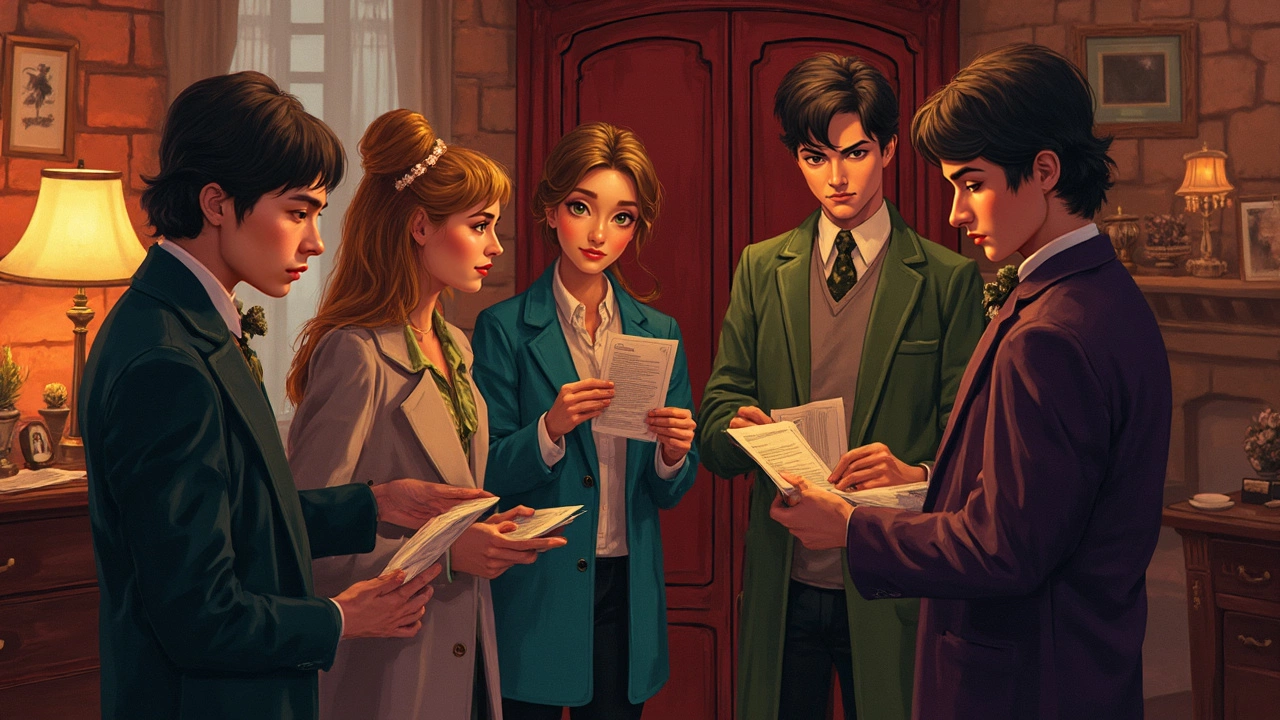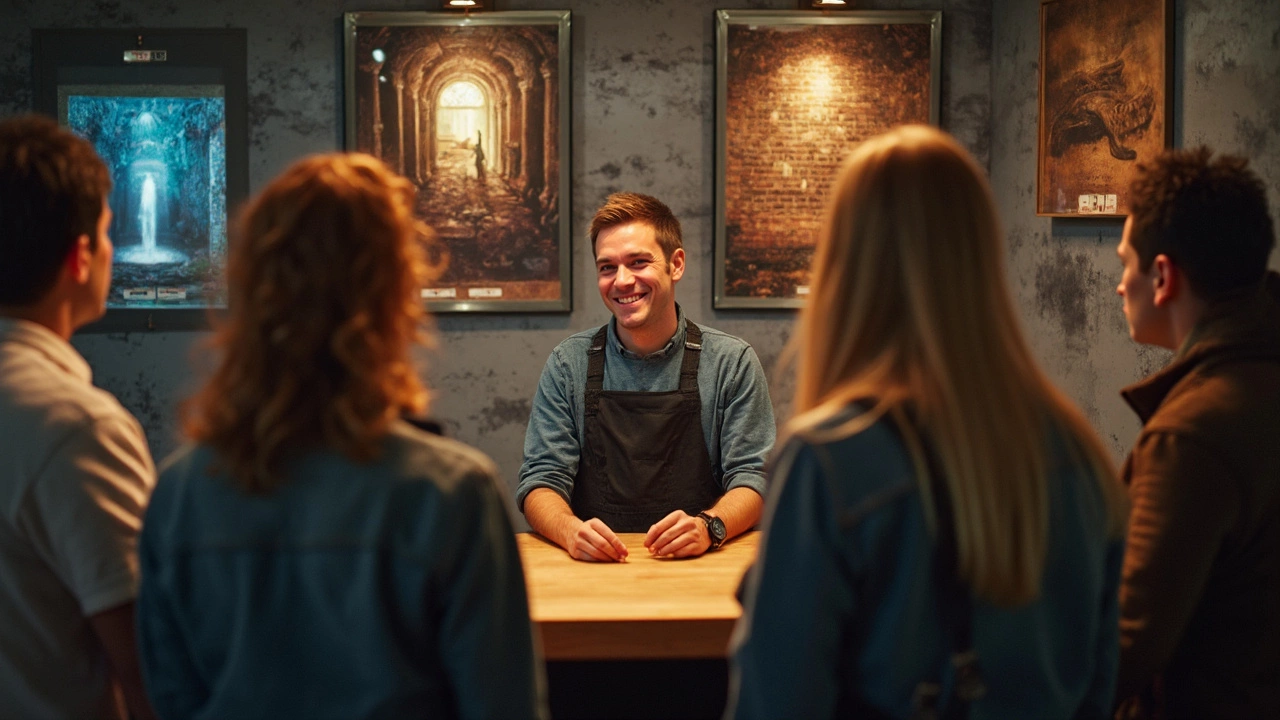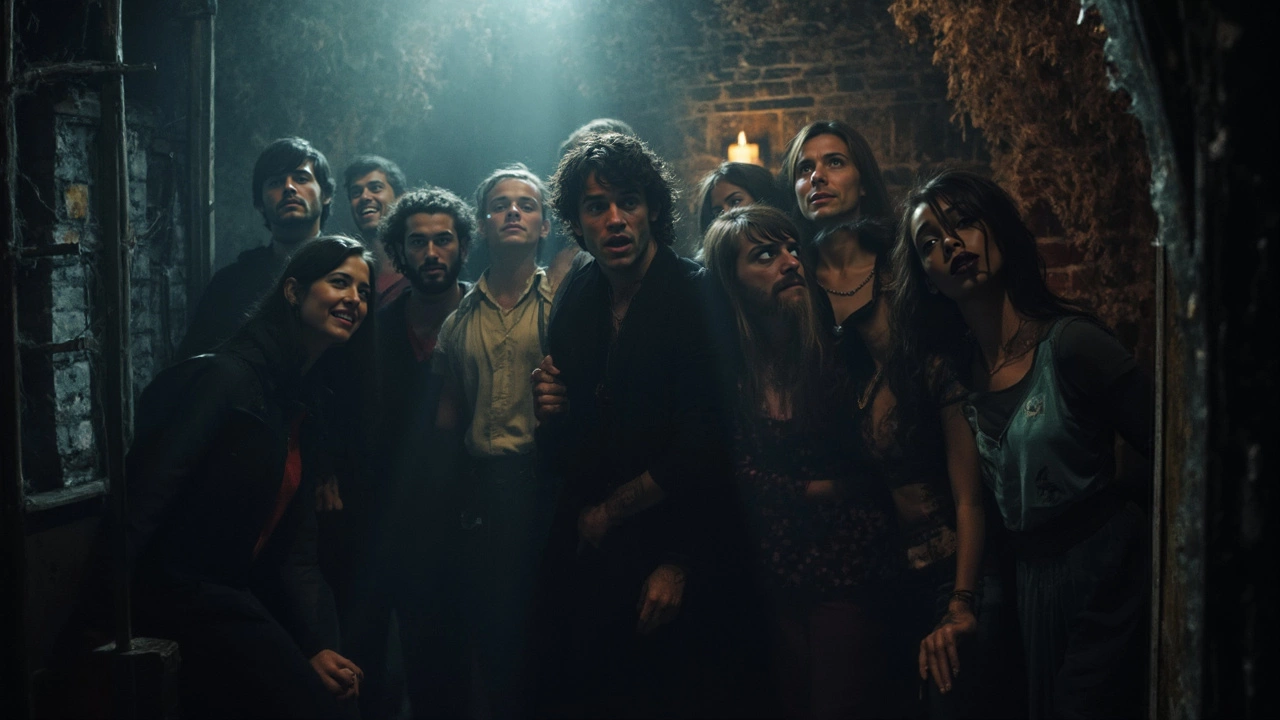If you're thinking about booking your first escape room, you might be asking yourself, "Am I going to get jump-scared out of my skin?" Honestly, it comes up a lot—especially if you're not exactly a fan of spooky movies or haunted houses.
Here’s what you need to know: Not all escape rooms are packed with surprises waiting to make you shriek. While some horror-themed rooms go all out with loud noises, creepy actors, or sudden lights, most regular escape rooms skip the cheap scares and focus on puzzles, stories, and teamwork. Think of them more like interactive games than haunted attractions.
But yeah, a few places do lean into the horror vibe, and those rooms exist for folks who get a buzz from jump scares. It’s all about reading the room description before you hit ‘book now’. If “intense,” “scary,” or “thrilling” pop up, they might be warning signs for jump-scare content.
- What Counts as a Jump Scare in Escape Rooms?
- Are Jump Scares Common or Rare?
- Types of Escape Rooms: Scary vs. Non-Scary
- Tips for Choosing the Right Experience
- What to Ask Before You Book
What Counts as a Jump Scare in Escape Rooms?
Jump scares in escape rooms aren’t that different from the ones in horror movies or video games. It’s basically any sudden moment meant to make you flinch or let out a yelp. In a real escape room, this usually means a loud noise, a light suddenly flashing, or something or someone moving when you least expect it.
Some scary escape rooms go a step further by using live actors who might jump out from a hidden door, bang loudly behind the wall, or even chase players a little. Other rooms get creative with the technology; picture a painting flying open automatically or a skeleton popping out when you solve a puzzle.
Here’s what usually makes up a jump scare inside an escape room:
- Sudden loud sounds – sirens, door slams, or alarms out of nowhere.
- Flashy visual effects – strobe lights or pitch-black darkness that switches on and off.
- Live actors – someone grabbing your ankle or shouting from the shadows.
- Hidden moving props – dolls that scoot across a table, or furniture slamming shut.
Most escape room companies spell this stuff out in advance if their experience is meant to be scary. Ratings like “PG-13” or labeled themes such as “haunted,” “asylum,” or “zombie” usually signal you might find classic jump scares inside. If you’re not sure, don’t be shy—ask the staff about the room’s intensity before you book.
Are Jump Scares Common or Rare?
It’s a fair question: Will you find jump scares in most escape rooms, or are they something operators toss in just to mess with people? The short answer: jump scares are actually pretty rare.
Most escape room venues—especially those outside major cities—keep things family-friendly and focus on puzzles, teamwork, and a little suspense, but nothing actually spooky. Companies know a lot of people want a good time, not a panic attack. Expect a playful challenge, not a haunted house experience, in these places.
Of course, some rooms go for a horror theme or market themselves as "extreme" experiences. These are the ones where you might run into sudden sounds, flickering lights, or even an actor popping out. But even in horror rooms, not every moment is about scaring you—many players love the adrenaline, while others just want a mental challenge. For families or work groups, providers rarely add jump scares.
If you’re into numbers, a 2023 survey by Escape Room Tips asked 500 players about their experience. Only about 18% said they had ever faced real jump scares, and most of them said it happened in rooms labeled as scary or horror-themed.
| Room Theme | Chance of Jump Scares |
|---|---|
| Classic/Mystery | Very Low |
| Adventure/Espionage | Low |
| Horror/Haunted | High |
Want to avoid surprises? Just stay away from any escape room with words like "haunted," "zombie," or "asylum" in the title. Read reviews, too—past players often drop hints if a surprise got them.

Types of Escape Rooms: Scary vs. Non-Scary
Not all escape rooms are made to freak you out. Some crank up the creepy vibe with flickering lights, actors in costumes, and random loud noises. Others are just about solving puzzles and escaping with your wits. So, what really sets scary rooms apart from the rest?
Scary escape rooms usually have themes like haunted houses, zombie labs, or abandoned asylums. You’ll see warnings on their websites—words like “intense,” “horror,” or “not for the faint-hearted” don’t just sound cool; they’re real clues. These places sometimes use actual actors. They might pop out when you don’t expect it, or whisper hints in your ear. More often, you’ll deal with sudden noises, fake blood, or weird effects. To give you an idea, one survey from Room Escape Artist found about 25% of escape rooms in the U.S. had at least one horror-themed or jump-scare element.
Non-scary rooms, on the other hand, come in all sorts of flavors—detective mysteries, bank heists, outer space adventures, or fantasy quests. No one’s trying to scare you here. The biggest “jump” you’ll get is a buzzer when you get the wrong answer. The focus is on logic, observation, and having a good time with friends or family.
“For first-timers or families, we always recommend starting with a non-horror room. That way, everyone can just have fun without worrying about being startled,” says Derek Tam, co-founder of Escape Authority.
If you’re ever unsure, check out room reviews or call the venue. Most are happy to tell you exactly what kind of experience you’re signing up for. Here’s a quick rundown to compare:
| Type | Common Themes | Jump Scares? |
|---|---|---|
| Scary Escape Rooms | Haunted, Paranormal, Zombie | Yes, often |
| Non-Scary Escape Rooms | Detective, Adventure, Sci-Fi | Rarely/Never |
If you’re with kids, easily startled friends, or just want good old-fashioned problem-solving, stick to the non-scary side. But if you’re down for some adrenaline, those scary rooms won’t disappoint!
Tips for Choosing the Right Experience
Picking the perfect escape room isn't guesswork. You just need to ask the right questions and read the fine print. Start with the website—most game companies will spell out the vibe. If you see words like "horror," "haunted," or "psychological thriller," that's your sign: jump scares are probably in play.
But don't just go by marketing blurbs. Call or message the place. Staff are usually upfront about how intense their rooms get. In a survey by Room Escape Artist in 2023, over 85% of escape room businesses said they get direct questions about scary elements every week. That’s how common this concern is.
If you’re booking for a group, especially with kids or anyone who hates being startled, double-check the recommended ages. Here’s a quick cheat sheet:
- Family-friendly escape rooms: Rarely have any jump scares—usually just puzzles and a fun atmosphere.
- Horror-themed escape rooms: Almost guaranteed to have scary effects, dark lighting, and sometimes live actors jumping out.
- Mystery or adventure escape rooms: Focus more on story and clever puzzles, not scaring guests.
Look for real customer reviews. You’ll often find honest mentions about jump scares or surprise actors. One TripAdvisor post might mention, “Great for kids, no scary bits at all,” while another warns, “Creepy surprise in the last room—be ready!”
“Never be shy about asking for details! Good escape rooms want you to have a great time, so they’ll tell you what to expect.”
— David Spira, Room Escape Artist
You can also ask if the scares can be toned down or turned off. Some places will adjust the experience if you don’t want actors in your face or loud sudden noises. And if anyone in your group is uneasy, bring it up before you go inside—the game hosts would rather you have fun than bail halfway through.
For quick reference, here’s a look at how common jump scares are in different types of rooms:
| Type | Chance of Jump Scares |
|---|---|
| Family/Classic | Low |
| Adventure/Mystery | Low-Medium |
| Horror/Thriller | High |
The bottom line? If you want an adrenaline rush, horror rooms with strong scare effects will deliver. If you just want puzzles and teamwork, stick to adventure or family themes and always clarify before you book. Your escape room experience should be exactly what you want, without any nasty surprises.

What to Ask Before You Book
Before you lock in your spot at an escape room, it pays to ask a few direct questions. This isn’t just about dodging jump scares—it’s about making the whole event a blast for everyone in your group. Don’t feel weird about asking the staff, either. Owners and game masters want you to have a good time, and they usually know people have different comfort zones.
Here’s a quick checklist to run through before you hand over your credit card:
- Ask directly if the room uses jump scares or startling effects. Some spots are chill, others lean hard into the horror angle. Just saying "Does this room have jump scares or actors that come at us?" will get you a straight answer most places.
- Find out if the room is meant to be scary at all. If the word "horror," "intense," "thrilling," or "creepy" pops up in the description or staff answer, you know what you’re getting into.
- Check if live actors are involved. Live actors often mean surprises and sometimes physical scares—great for some, nightmare fuel for others.
- Ask if there are sudden loud noises, flashing lights, or pitch-black sections. Rooms with heavy sensory effects can mess with people who hate jumpy stuff or have issues with light and sound.
- Get the age rating or difficulty of the room. Kid-friendly escape rooms almost never have serious jump scares, while teen or adult horror-themed rooms might go all out.
You can also check reviews before booking. Look for keywords like "scary" or "startle" on Yelp or Google. Reviewers usually don’t hold back if something freaked them out.
If you’re booking for a birthday, team-building, or family activity, it’s smart to play it safe. And if someone in your group has health concerns like heart conditions or epilepsy, definitely mention it. Most locations will recommend the right escape room once you lay out what you want and what you’d prefer to avoid.
| Common Questions to Ask | Why It Matters |
|---|---|
| Are there actors or jump scares? | So you’re not caught off guard if you hate being startled. |
| What’s the theme—scary or fun? | The vibe sets the tone for your group’s experience. |
| Any age restrictions or health warnings? | Rooms with mature themes or heavy effects aren’t for everyone. |
The big takeaway? Just ask. Most escape room places want you to be happy and come back, so they’ll tell it like it is if you check before booking.

